Teach Your Child to Blow Bubbles
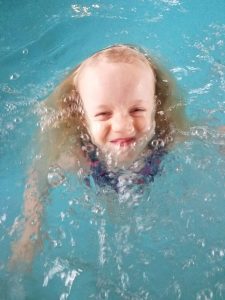 If you want to learn how to teach your child to blow bubbles, you’ve come to the right place! Bubbles are a great skill to teach your child at a young age to prepare them to take swimming lessons or learn how to swim. Also, one study in the UK found that toddlers and babies who learn to blow bubbles at an earlier age, also learn to speak sooner. So teaching your child to blow bubbles, has many benefits.
If you want to learn how to teach your child to blow bubbles, you’ve come to the right place! Bubbles are a great skill to teach your child at a young age to prepare them to take swimming lessons or learn how to swim. Also, one study in the UK found that toddlers and babies who learn to blow bubbles at an earlier age, also learn to speak sooner. So teaching your child to blow bubbles, has many benefits.
Blowing bubbles is one of the first skills we want children to learn during their swimming lesson because it helps them with breath control. Breath control is foundational to swimming! Without breath control it is really hard, if not impossible to teach someone to swim.
Teaching a child to blow bubbles is a skill you can easily do at home during bath time or at the swimming pool. And as you make it fun, your child will learn to love the water!
Depending on the age of the child, you can start with the step that feels most appropriate. Using your own intuition and creativity to teach your child, you can add to these steps, skills, and tips with some of your own. We would love to hear from you if you have more great ideas to help children with blowing bubbles.
Mouth Bubbles
- Hold your breath. This skill is something you can introduce to your child at any age. However, the older your child is, the better they will be at accomplishing this skill. You can make this fun for older children by checking out some of the games suggested below. For a younger child or baby who is under the age of 1, you can blow in their face to get a natural breath hold response. When conditions are right, at The Swim Academy, we use this natural reflex to put their face under water. We have still seen this reflex in children as old as 18 months, but usually the reflex goes away without use by 6 months old.
- Teach blowing air with pursed lips. These two videos (here and here) have some fun ways to do that. This will also make bath time even more fun. Making the lips as small as possible and blowing air out either into the air or against a hand is the first step to actual bubbles. When a child can watch you do this and then feel you do it against their face or hand, they will start to learn what you want them to do. Then have them give it a try.
- Blow the water. You don’t even have to touch the water yet. Just show your child that their blow will make the water move. They might think it is a bit scary or they may think it’s fun. Show them it is fun and safe by doing it for them first.
- Kiss the water. After your child is confidently doing skills #2 and #3 it is time to introduce the Water Kiss. With the blow skill they are learning in #2 and #3, have your child go down and kiss the water with their blow.
- Blow bubbles with lips in the water. Now that they have the Water Kiss down, you can have your child put their lips deeper in the water to blow actual bubbles. See some of our games below to spice up bubble blowing at your house.
Nose Bubbles
Now we are going to switch gears to nose bubbles and then later combine mouth bubbles and nose bubbles. Nose bubbles are so important because learning at a young age means keeping water out of the nose and having this skill for life. It is much easier to learn this skill at a young age. Nose bubbles are done with the mouth closed off and air exiting only through the nostrils.
- Teach your child to hum! As you teach your child to hum outside of bath time, they are learning a crucial skill that will translate to the pool and benefit them greatly.
- Practice blowing noses into tissues. Don’t forget to wash hands! But this is another skill that you can practice outside of bath time. After they’ve got it down, connect this skill with water by having them blow their nose while sitting in the bathtub. Explain that it is the same skill to blow nose bubbles. Just be sure to NOT breath in!
- Humming in the water. After your child can confidently hum outside of the water, introduce the skill to them in the water. Game: Hum different songs for them and see if they can guess what you are humming, then have them do the same for you!
- Nose bubbles. Practice nose bubbles! After your child can blow air into a tissue as if blowing their nose, have them take this skill to the water. With practice, they will be a pro at nose bubbles.
Mouth bubbles, Nose Bubbles, and Both Bubbles!
- Eyes/forehead in the water with bubbles! Before having your kiddo putting their face in the water, be sure they are comfortable and ready to do so. Sometimes using the word forehead, eyes, or goggles instead of face is less scary to a young child. See what works best for your kiddo. Have them practice mouth bubbles, nose bubbles, and both bubbles with their face in the water. Try out some of the games to make it even more fun.
- Increase Time. Next, increase the amount of time they can blow bubbles. You can make this a game, count out loud, or put your hands in the water so they can see your fingers as you count. Now we’ve come full circle, back to breath holds as we introduce “Increase Time”.
Games
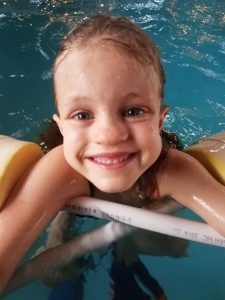 Children, and let’s face it… even some of us adults, love games. These are just a few ideas of games you can play with your child to make blowing mouth, nose, or both mouth and nose bubbles fun. The more you practice all three of those skills, the more confident your child will be in and around the water.
Children, and let’s face it… even some of us adults, love games. These are just a few ideas of games you can play with your child to make blowing mouth, nose, or both mouth and nose bubbles fun. The more you practice all three of those skills, the more confident your child will be in and around the water.
Counting Bubbles
Practice blowing 10 (give or take) bubbles in a row with a breath in between. This game is good to teach rhythmic breathing. Challenge them to do more bubbles in a row OR spend less time in between breathing or resting.
Knock it Down (Counting Bubbles)
This version of Counting Bubbles (above) involves holding up 10 fingers (giver or take). After your child blows a bubble, he or she gets to “knock” one of your fingers “down”. Sound effects make this game more fun. And at the end when your last finger goes down, be sure to give him or her knuckles or a fist pump. Again, sound effects for the “give me knuckles” or the fist pump will make this game a favorite. You can also do the knuckles on the surface of the water for fun little splash.
Baby Bubbles, Motorbike Bubbles, and Volcano Bubbles
See our video coming soon!
Beat Bubbles
Provide a consistent beat that your child blows bubbles to and challenge them to stick to the beat. Speed the beat up once they get good at it slow. This game also promotes rhythmic breathing.
Counting Game 1
Count out loud and see how long your child can blow bubbles. Challenge him or her to go longer and longer OR make it to a certain number that might currently be 2-3 counts out of reach.
Counting Game 2
Put your hands in the water so they can see your fingers as you count. Challenge him or her to go longer and longer OR make it to a certain number that might currently be 2-3 counts out of reach.
Guess that Tune
Hum different songs for your child and see if they can guess what you are humming, then have them do the same for you!
After that, it’s just practice and repetition and making learning fun. Hopefully, some of these tips will support you in getting your child more water safe and ready for swimming lessons. Please let us know if we can answer any questions or support you in any way!
Until next time, have fun and stay water smart and water safe!
The Swim Academy
Jamie Hubbard

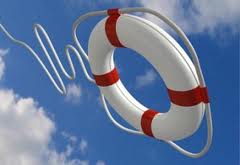 This article is a guide for what you need to know to save your child’s life when it comes to water.
This article is a guide for what you need to know to save your child’s life when it comes to water.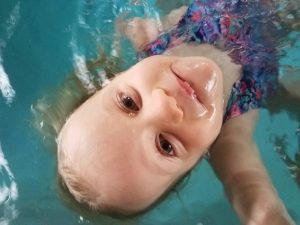
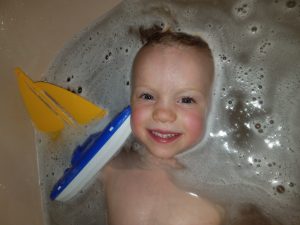
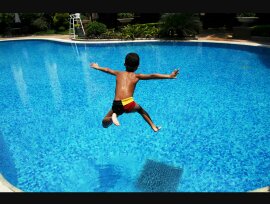 Going to the pool as a family and letting children explore the water world (supervised, but on their own) is one of the most powerful ways for kids to get a feel for the water while feeling in control of their world.
Going to the pool as a family and letting children explore the water world (supervised, but on their own) is one of the most powerful ways for kids to get a feel for the water while feeling in control of their world. 